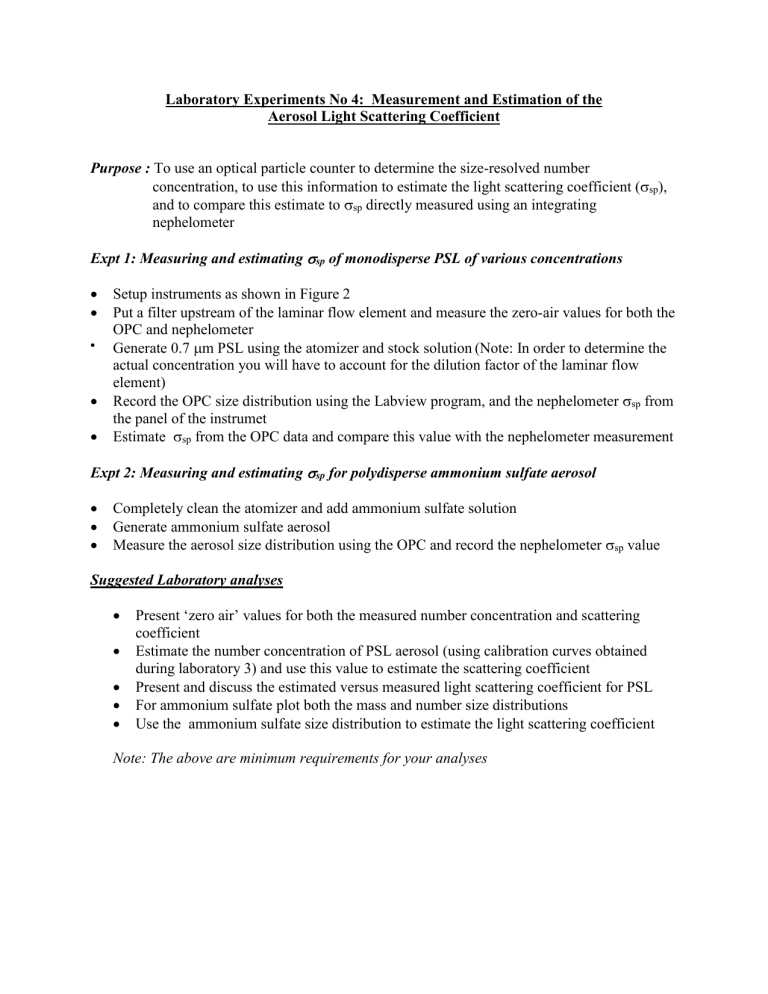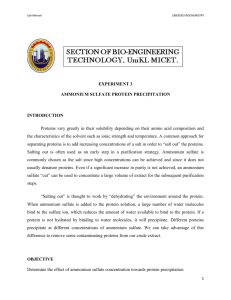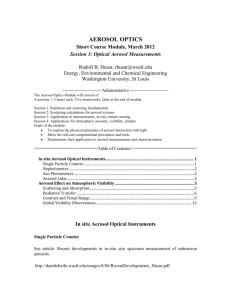Measurement of Estimation of the Aerosol Light Scattering Coefficient

Laboratory Experiments No 4: Measurement and Estimation of the
Aerosol Light Scattering Coefficient
Purpose : To use an optical particle counter to determine the size-resolved number concentration, to use this information to estimate the light scattering coefficient (
sp
), and to compare this estimate to
sp
directly measured using an integrating nephelometer
Expt 1: Measuring and estimating
sp
of monodisperse PSL of various concentrations
Setup instruments as shown in Figure 2
Put a filter upstream of the laminar flow element and measure the zero-air values for both the
OPC and nephelometer
Generate 0.7
m PSL using the atomizer and stock solution (Note: In order to determine the actual concentration you will have to account for the dilution factor of the laminar flow element)
Record the OPC size distribution using the Labview program, and the nephelometer
sp
from the panel of the instrumet
Estimate
sp
from the OPC data and compare this value with the nephelometer measurement
Expt 2: Measuring and estimating
sp
for polydisperse ammonium sulfate aerosol
Completely clean the atomizer and add ammonium sulfate solution
Generate ammonium sulfate aerosol
Measure the aerosol size distribution using the OPC and record the nephelometer
sp
value
Suggested Laboratory analyses
Present ‘zero air’ values for both the measured number concentration and scattering coefficient
Estimate the number concentration of PSL aerosol (using calibration curves obtained during laboratory 3) and use this value to estimate the scattering coefficient
Present and discuss the estimated versus measured light scattering coefficient for PSL
For ammonium sulfate plot both the mass and number size distributions
Use the ammonium sulfate size distribution to estimate the light scattering coefficient
Note: The above are minimum requirements for your analyses











